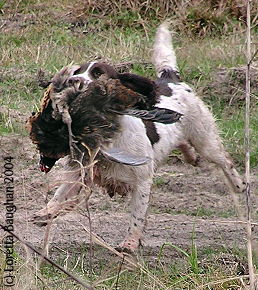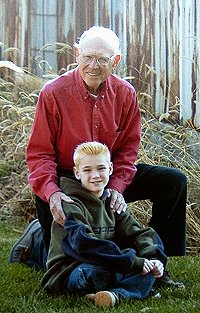  Change is inevitable. This old adage touches every aspect of our lives. That said, consider the changes in our English springer spaniel field trial sport in chronological order:
The sport has grown, and now it is apparent that another change is on the horizon. Both national championship events are reaching the number of entries that exceed the logistics and time to provide an adequate test for the dogs. In recent years, both trials have required five days for completion. This year, the National Amateur Championship spilled over into a sixth day.
A five day event seems to be the standard. If so, then what is the maximum number of dogs that can be entered? Data compiled from the recently completed National Amateur Championship, with 140 entries, offers some insight.
*Excludes the sixth-day water series with 25 dogs.
During the five day land series, 417 dogs came to the line. Experience has taught us that in our field trials we average about ten dogs an hour or six minutes per dog.
When we multiply the 417 dogs called to the line by six minutes, we have a total of 2,502 minutes or 41.7 hours for the five day land series.
Using the standard of 40 hours over five days, it appears that we already have maxed out with the entries as evidenced by this trial.
A few more dogs could be added by extending the trial day to sunset but this poses a disadvantage to dogs and handlers running at that time. Extending the number of days for the trial could allow for more entries. However, we should consider the physical stamina and other limitations of the judges and supporting field trial staff. The increasing days and expenses born by the handlers serves as another concern.
Requiring two points to qualify for the championship would decrease the number of entries.
To look into this change, let us examine more of the data. There were 140 starting dogs and a total of 417 dogs called to the line over the five day land series. When comparing the number of starting dogs to those called to the line, there is an average of three.
"The time is approaching - if not already here - when the entries exceed numbers which we can practically manage."
*Excludes six scratches
In this trial, if the dogs with one point had not qualified, then the starting number would have been reduced by 18 to 122 dogs.
We can estimate the number of dogs to the line by multiplying 122 by 3 for a total of 366 dogs (Table III).
Using the same calculation used in Table II, we multiply 336 by six minutes. This amounts to 2,196 minutes or 36.2 hours.
The results indicate that using two points to qualify would have reduced the trial time by one half day.
It is not the purview of this paper to delve into the controversy of proposing a change to two points to qualify. Rather, the intent is to present these facts and figures that may help in developing a change. The time is approaching - if not already here - when the entries exceed numbers which we can practically manage. At present, we do not have a plan to cope with this.
All the major changes described in the history have come after serious committee study. We now need such a committee that could be appointed at the next annual meeting of the Governors of the Parents Club. The committee then could schedule meetings by teleconference to expedite a recommendation for vote at the 2005 National Amateur Championship delegates meeting.
Conclusions:
The committee should be prepared to make recommendations at the next National Amateur Championship delegates meeting.

|
|
|
| Bookstore | The Bookshelf | Advertise on SJ | Classifieds | Resources | NEW! Events | Letters | Archives | Spaniel Journal | |

